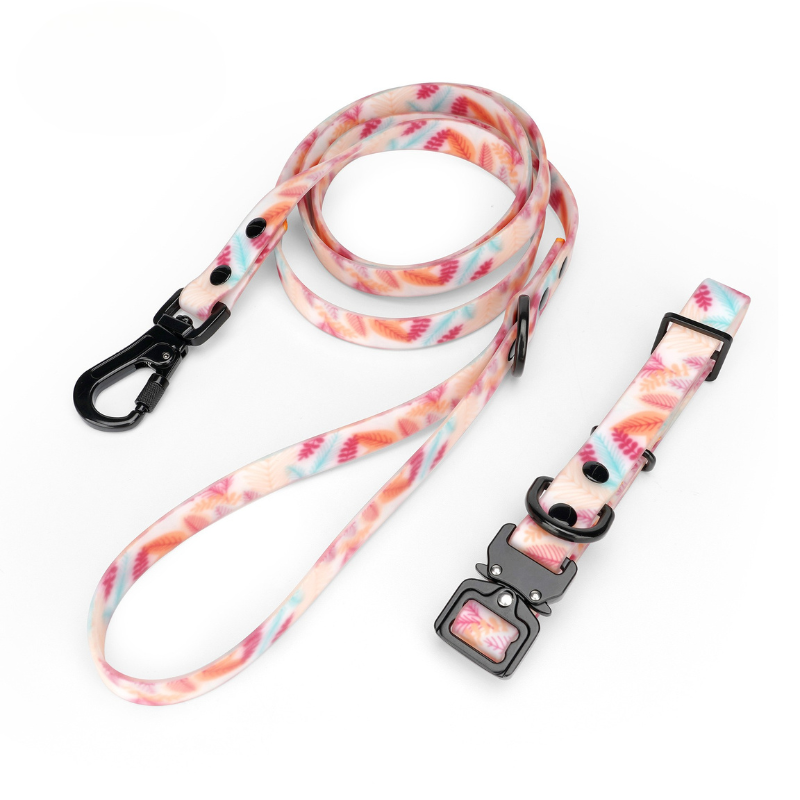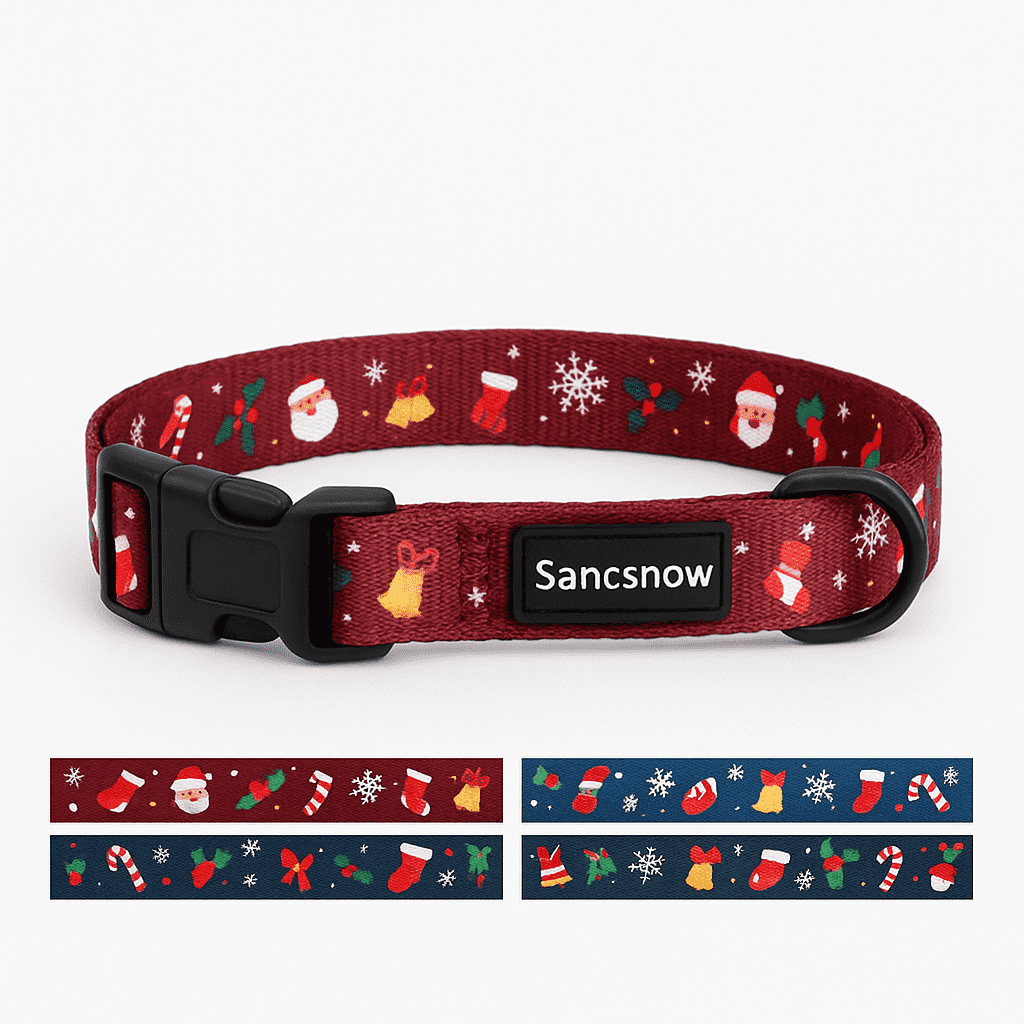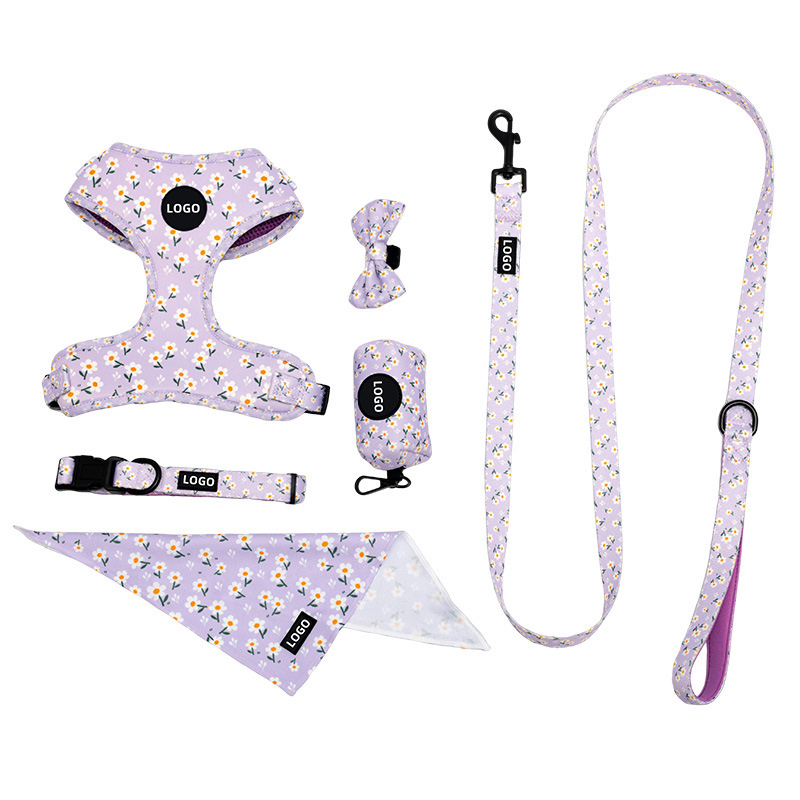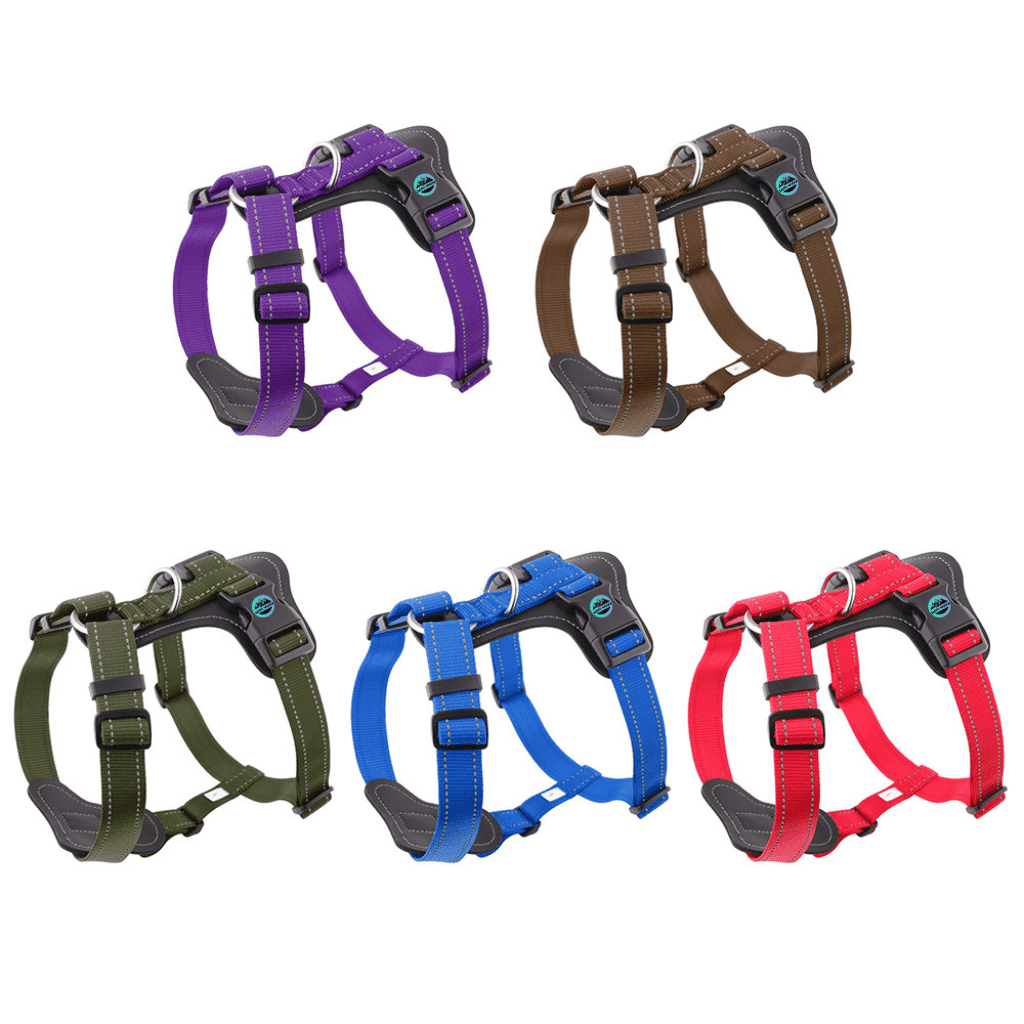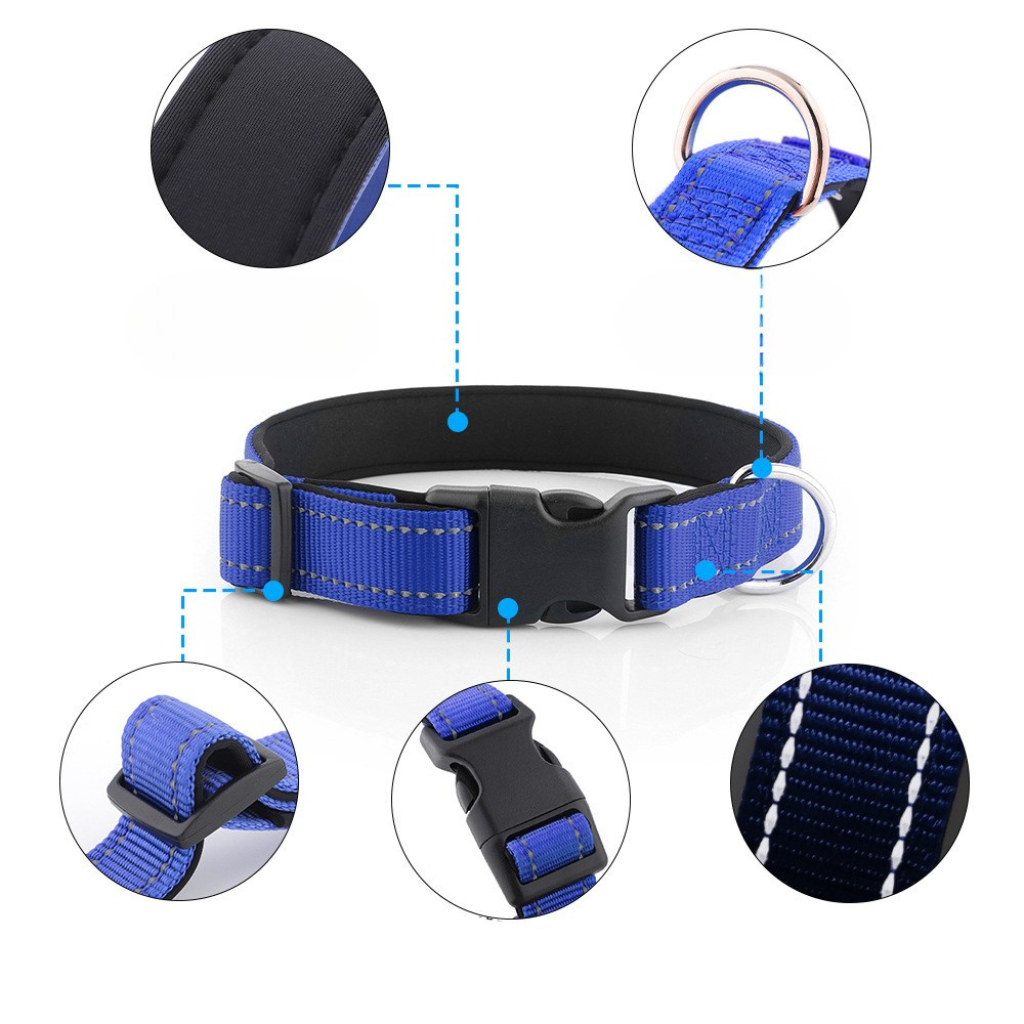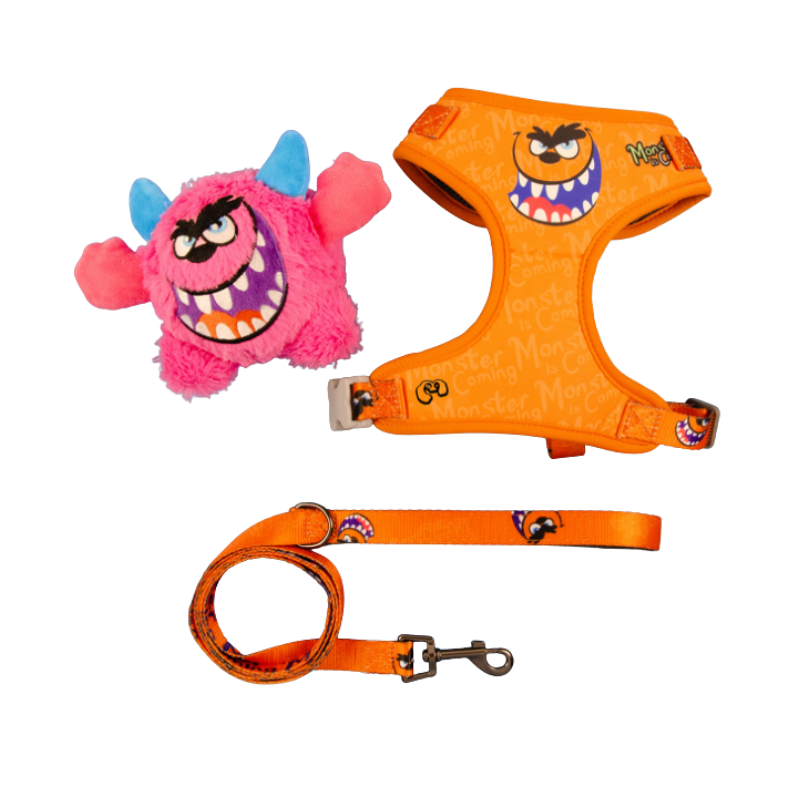Designing and customizing your own dog harnesses isn’t just about adding a logo—it’s about building a product your brand can stand behind. If you’re a new pet brand owner, chances are you’ve already asked questions like:
“Which harness style should I choose?” “How do I make sure the sizing works?” “What kind of customization is actually possible?”
This guide walks through all the key decisions, risks, and practical tips you need to know—before placing your first custom order.
Choosing the Right Harness Style: One Size Doesn’t Fit All
“What type of harness sells best?”
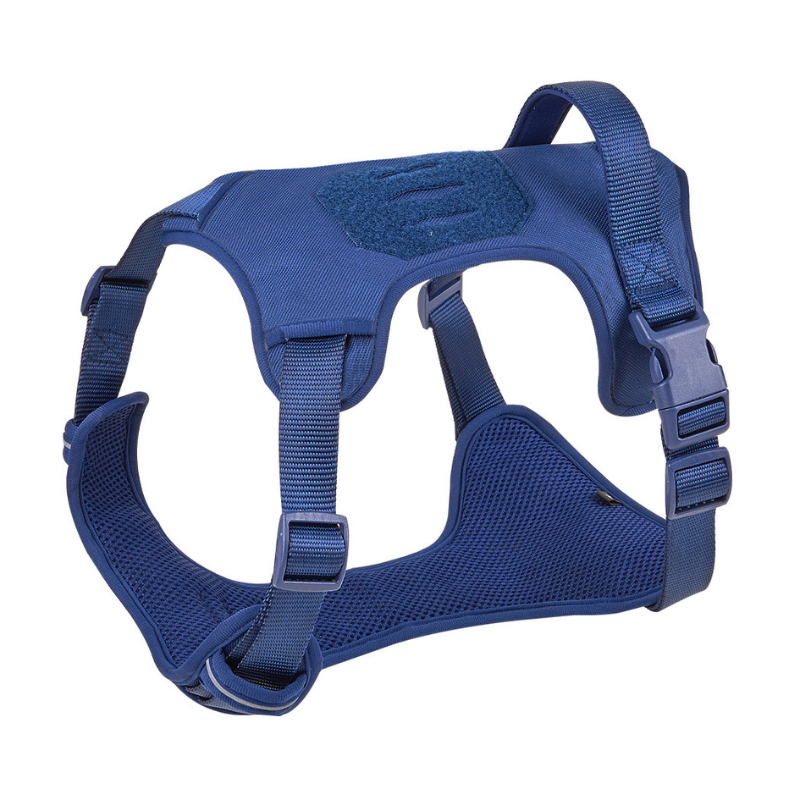
That depends on your audience. Are they active dog owners who want control and durability? Are they small-dog owners who prioritize ease and comfort?

Common styles include:
- H-shape (Classic): Lightweight, adjustable, works for most breeds
- Step-in harness: Easy to wear, great for smaller or anxious dogs
- Front-clip / No-pull: Ideal for training or large breeds
- Vest-style padded harness: Offers structure, padding, and a premium feel
Tip: Don’t choose based on looks alone—think about how your customers actually use the product.
Materials and Padding: Comfort, Cost, and Durability
“How do I balance quality with price?”

Start with the basics. Most outer harness layers are made of nylon or polyester webbing. For padding, choose between neoprene, foam, or mesh. Each option affects comfort and cost.
Some combinations:
- Nylon + neoprene lining: Durable and comfortable
- Polyester + mesh: Light and breathable
- Double-layered webbing: For high-strength control harnesses
Think about where the harness touches the dog’s body—especially the chest and belly. That’s where irritation happens if padding is poor.
Branding Options: Where and How to Show Your Logo
“Where should I put my logo? Will it fade or rub off?”

Harnesses give you more surface to work with than collars—but branding placement must be intentional. Here are some options:
- Silicone or PVC patch on the chest
- Woven label on side straps
- Printed logo on webbing (works best with bold logos)
- Laser-engraved hardware (on D-rings or buckles)
Be cautious of over-branding. One clear, durable logo often works better than five small ones that fade or get covered.
Sizing and Fit: The Most Common Point of Failure
“What if customers say the harness doesn’t fit?”
This is one of the most frequent sources of return—and it’s avoidable.
What you need to prepare:
- A reference harness you like, with measured strap lengths
- A size chart based on chest girth (not just weight)
- A decision on how adjustable each size should be
Many brands start with 3 sizes (S/M/L), then expand based on sales data. But whatever you do—confirm sizing in the sample before bulk production.
Hardware and Buckles: Small Parts, Big Impact

“Does hardware really matter?”
Absolutely. Bad clips = safety hazard. Ugly hardware = cheap feel.
Things to consider:
- Plastic vs metal buckles
- D-ring material and thickness
- Extra leash rings on the front or back?
If you’re positioning your brand as durable, sporty, or premium, hardware is one of the first things your customers will notice and touch.
Sampling: Don’t Skip or Rush This Step
“Can I just approve by photo?”
Photos help, but they can’t show you fit, comfort, or stitching quality. A sample lets you:
- Test size on a real dog
- Feel the fabric and padding
- Check logo placement and scale
- Spot any flaws before it’s too late
One good sample saves you from hundreds of poor-quality units. Always include this step, even if it adds a week.
Production Pitfalls: What Can Go Wrong?
Here are the most common mistakes new brands make during their first custom harness order:
- Relying only on digital drawings, not real samples
- Not confirming hardware model/finish in writing
- Forgetting to test size range or adjustability
- Assuming the second order will match the first without confirming
Mitigation strategy: Keep records of all specs, approvals, and reference samples. Reconfirm everything with every new batch.
Packaging, Labels, and Customer Experience
“Should I invest in packaging now?”
If you’re building a brand, then yes. Even a simple custom hang tag or zip bag makes a big difference.
Options to consider:
- Printed size labels
- Hang tags with your logo
- Zip bags or boxes for retail
- QR code or card with wearing instructions
These finishing touches influence not only sales, but customer satisfaction and brand recall.
Build with Intention

Custom harnesses aren’t plug-and-play products. They combine form, fit, and function—and small missteps compound at scale. As a brand owner, your job is to ask the right questions early, document decisions, and stay involved in the development process.
If you’re just getting started, focus on one harness style done well. Gather customer feedback, refine, and expand. That’s how strong pet brands grow—with clarity, consistency, and a long-term mindset.

